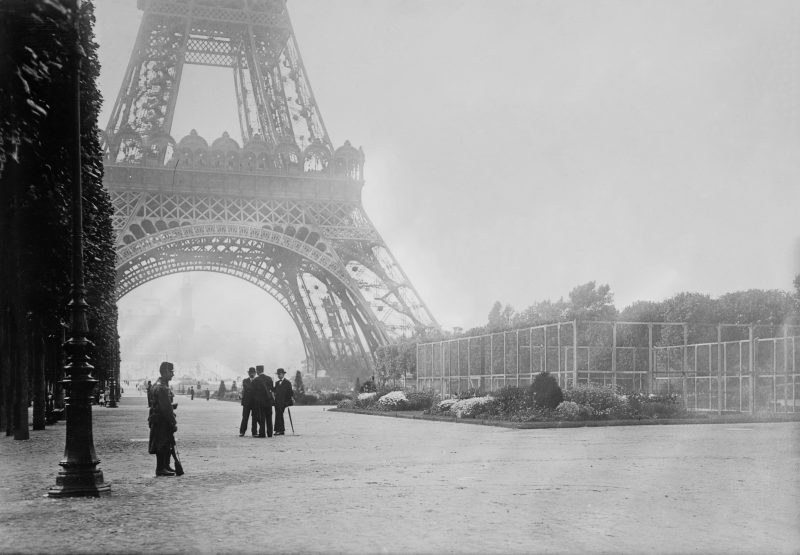William Noel Morgan kept a stash of negatives in a biscuit tin for 75 years. He never printed the photos from World War I, and he never showed them to his family.
When his daughter died a few years ago, his granddaughter and her husband opened the tin and found why the negatives had been hidden away. The photos include pictures from the Lieutenant’s romance with a French woman from 1917 to 1918. When he returned home from the war, his parents dissuaded him from pursuing the relationship any further. Although he agreed to their wishes, he wrote to her for many years and remembered her until he died at age 92 in 1983.
Also in the tin were pictures taken within Maison tolérée, or Maison close, a type of French brothel. These are the only known photographs from within a “blue light” brothel reserved for British officers by a secret edict of the British army.
Nothing is particularly shocking about the photos. There are young British officers drinking, smoking and playing the piano. There are young women wearing mildly provocative clothing.
Dr. Clare Makepeace is a British historian who specializes in sexuality and prostitution in World War I. He finds the images to be a “remarkable find, made all the more wonderful for being hidden away for so many years in something so everyday and mundane as a biscuit tin.
“These photos are so important in providing us with a more rounded picture of what life was like on the Western Front beyond the quagmire, the shelling, and the slaughter,” she continued.
There are more than 100 photos in Morgan’s collection, of which only a small amount are taken in the brothel. Others show officers relaxing. There are photos of British soldiers and French railwaymen manning a railhead near the Somme.
There are also photographs of a young French woman believed to be his lost love. She is seen with British officers on an outing. She is seen with what appears to be her twin. She is seen with Morgan.
Other photos show the destruction of war – bridges and railway stations destroyed by German shells. Vast craters too large for artillery shells are shown. There is not much information about what Morgan did in the war, but the photos provide a clue.
Morgan was a Royal Engineer and a qualified surveyor. He worked before and after the war for Lord Aberdare, one of the largest landowners and mine owners in Wales. His other photos show salient, or bulges, in the German positions.
Morgan’s unit was a “tunneling unit,” the 175th Company of the Royal Engineers. According to his records in the National Archives, he specifically applied to join that unit in 1915. He served in France until 1919. He was part of a dangerous war underground, where they tunneled under German positions and blew them up.
“Maybe WN (Morgan) decided that they were better not seen – partly because of the images in the brothel but also because they contained pictures of the young woman in France that he was discouraged from marrying. I see no reason why they should not be published now,” he adds. “They show another side of the war, which should also be remembered. Attitudes to sexuality have changed so much in the past century that I see no reason why they should cause offense today.”
It was a taboo to speak about organized prostitution on the Western Front. Robert Graves was one of the few to breach the taboo in his book Goodbye to all That. He wrote, “There were no restraints in France. These boys had money to spend and knew that they stood a good chance of being killed within a few weeks anyhow. They did not want to die virgins.”
Dr. Makepeace has studied diaries, books, and oral records of British soldiers who spoke openly about their sexual experiences on the Western Front. She points out that soldiers often connect sex with mortality. “Men chose to visit brothels, either as a reward for surviving battles or as a refuge from an imminent death,” she says.
Like the majority of veterans, Morgan never discussed this aspect of his service with his family. In fact, he barely spoke of the war at all until near the end of his life.
“Right at the end of his life, he would talk about the young woman he had known in France. He would become very emotional. While talking about her, he would even lapse into French,” according to his grandson, Dr. Rob Anthony.
